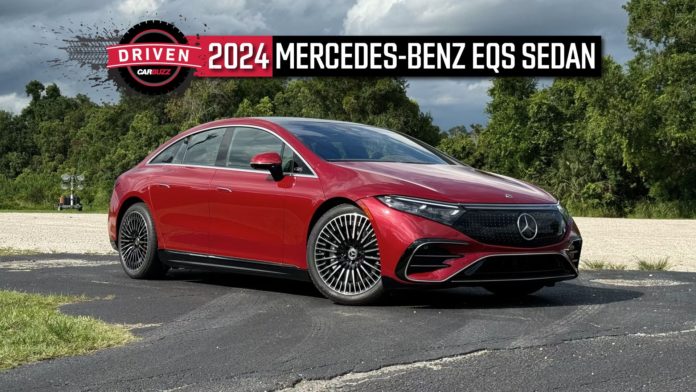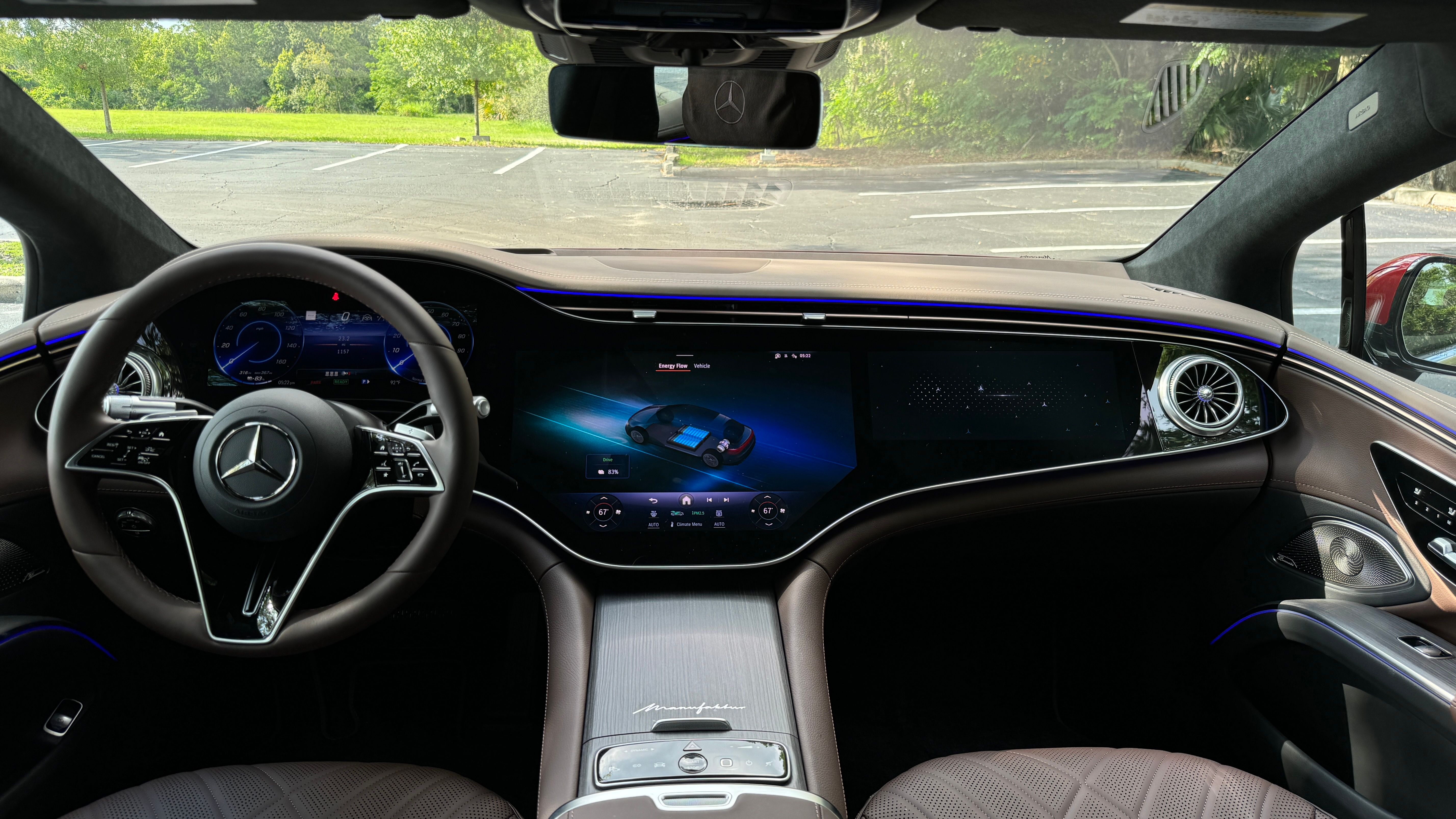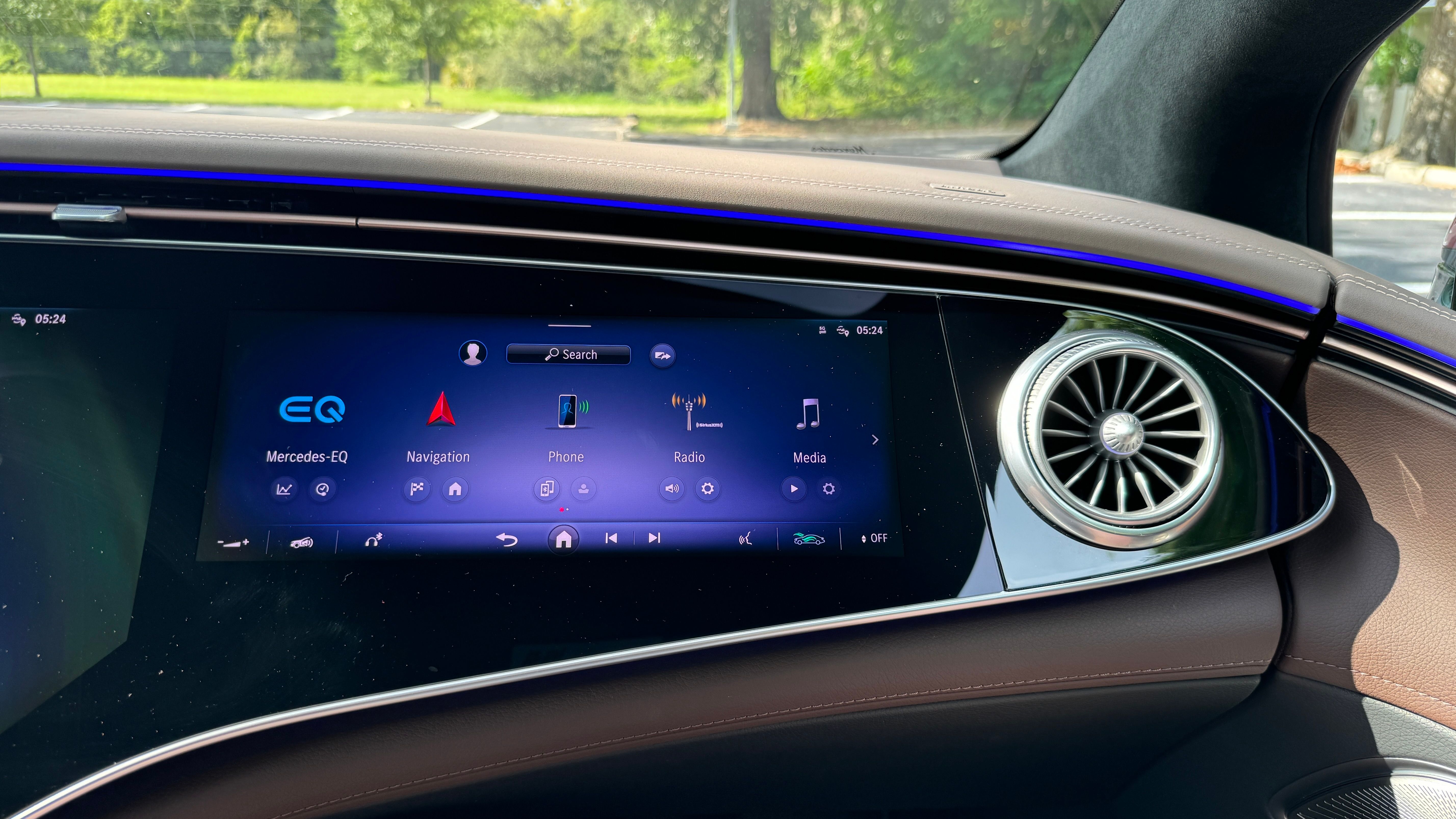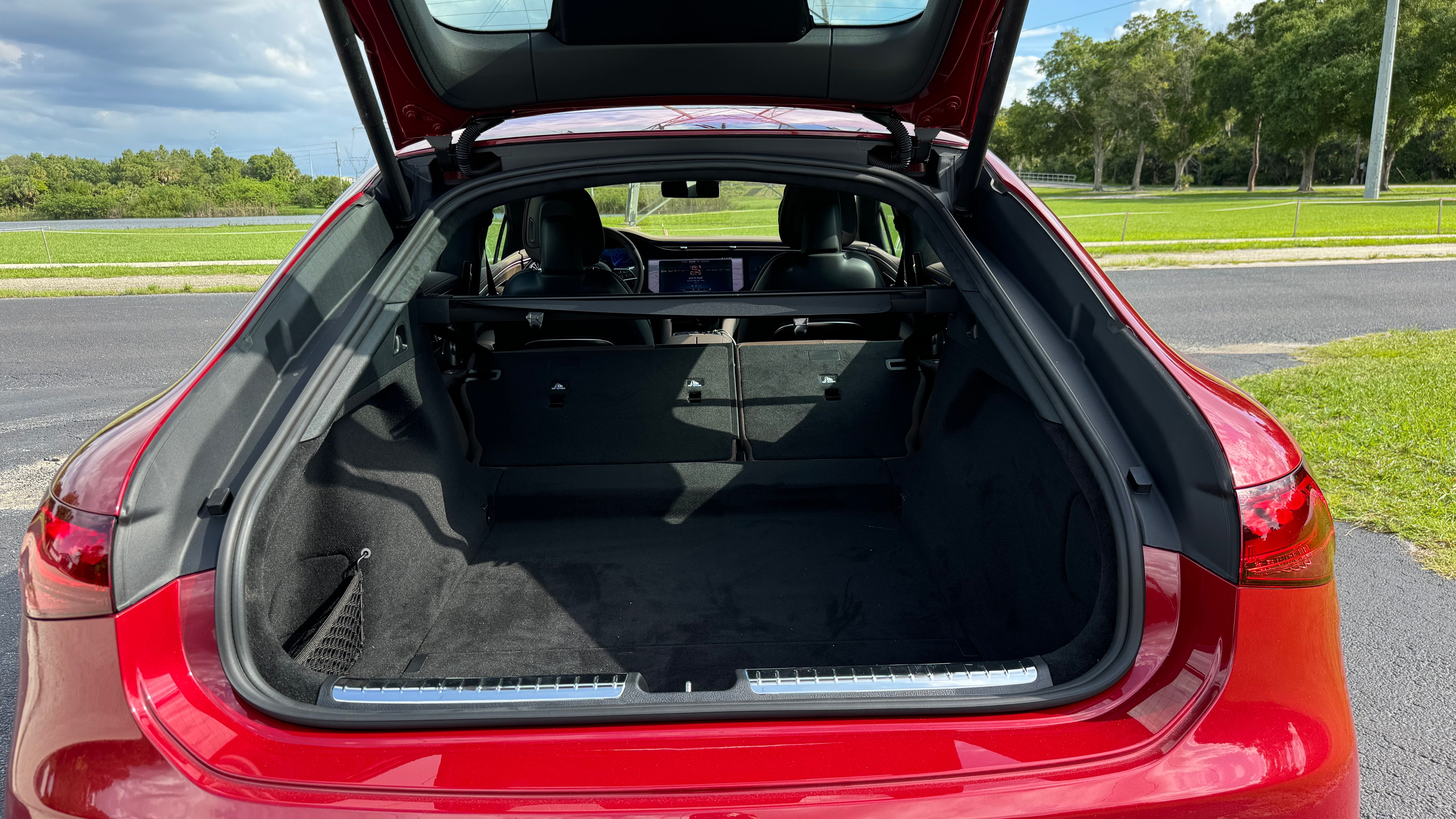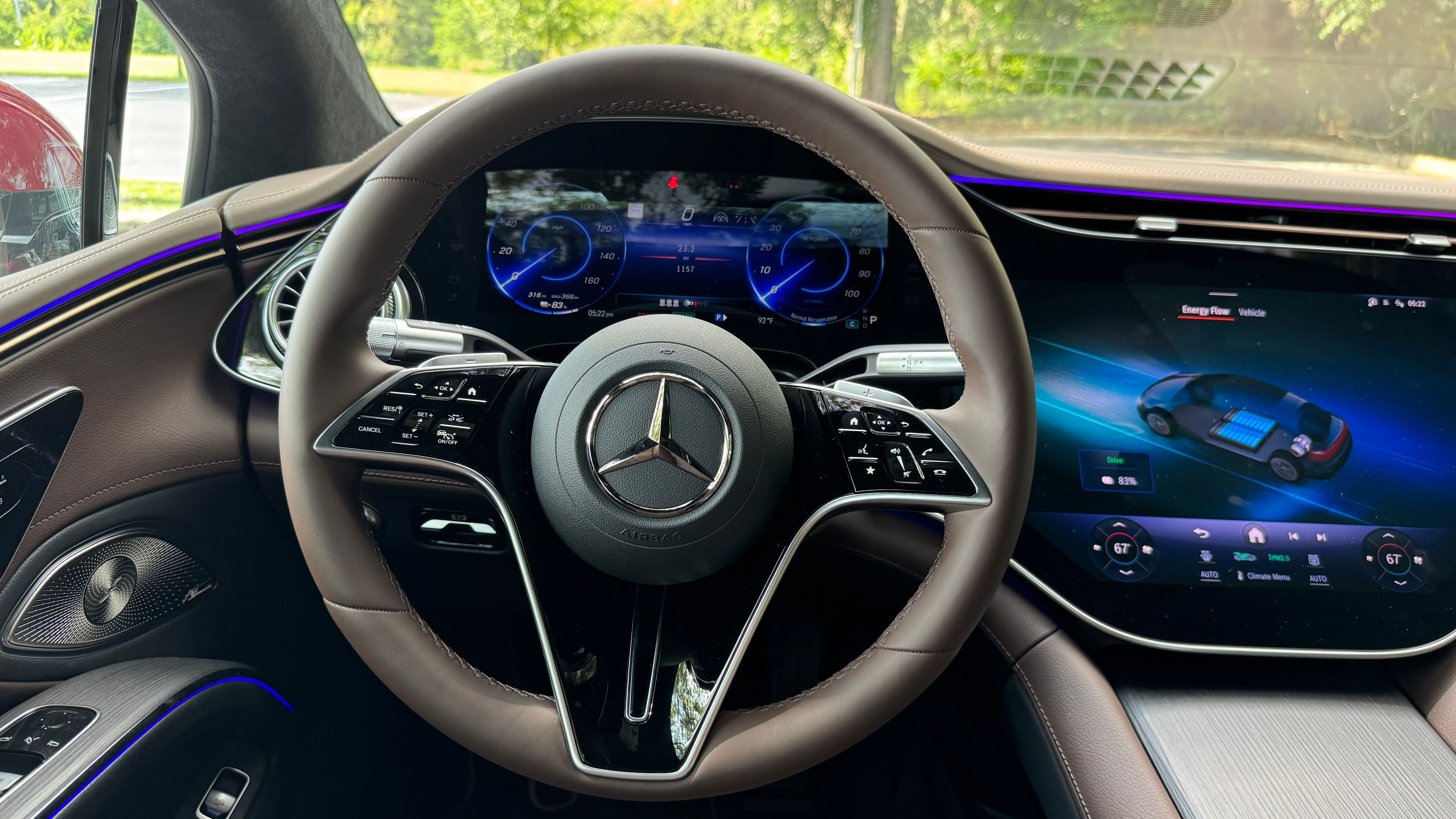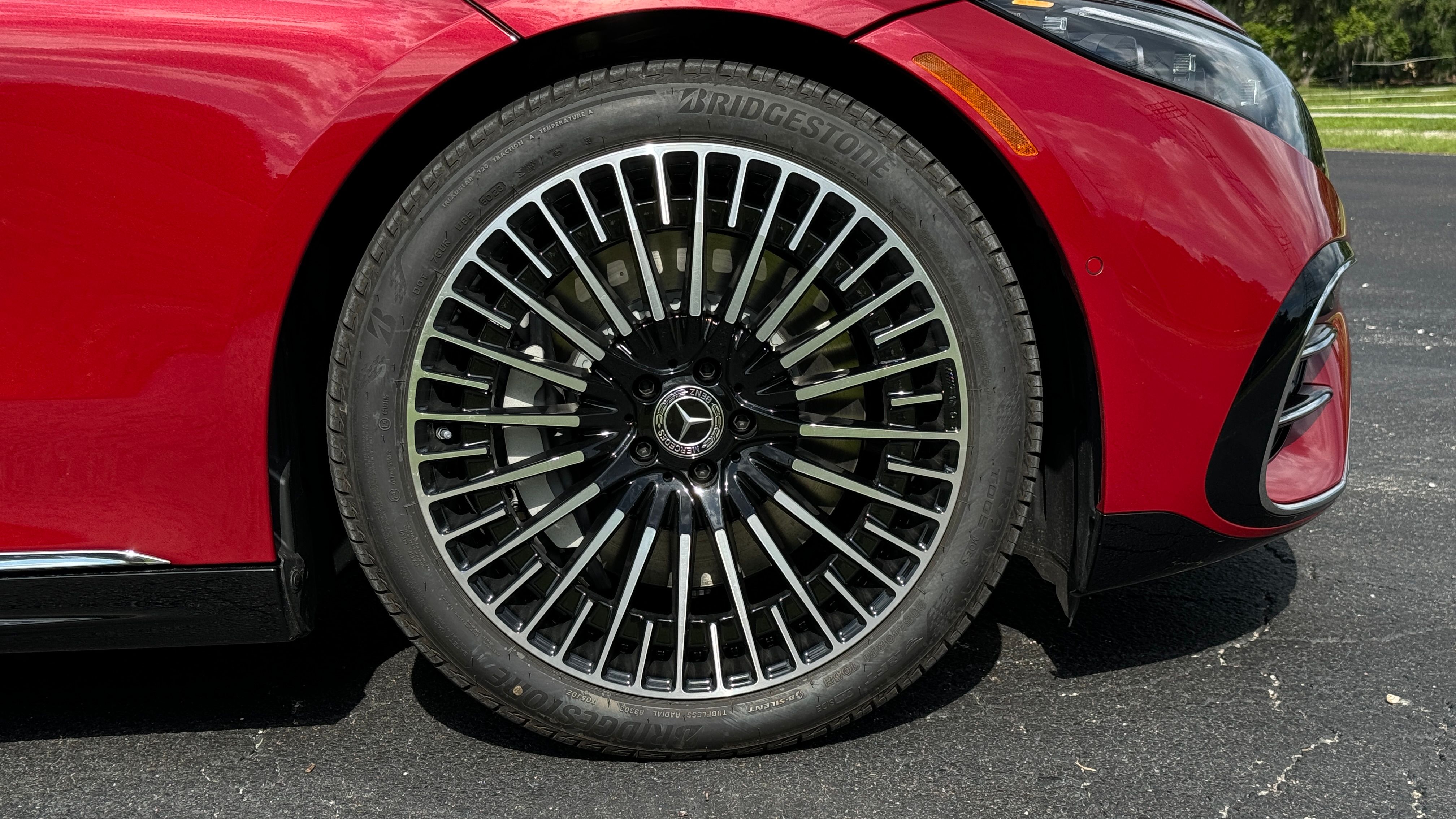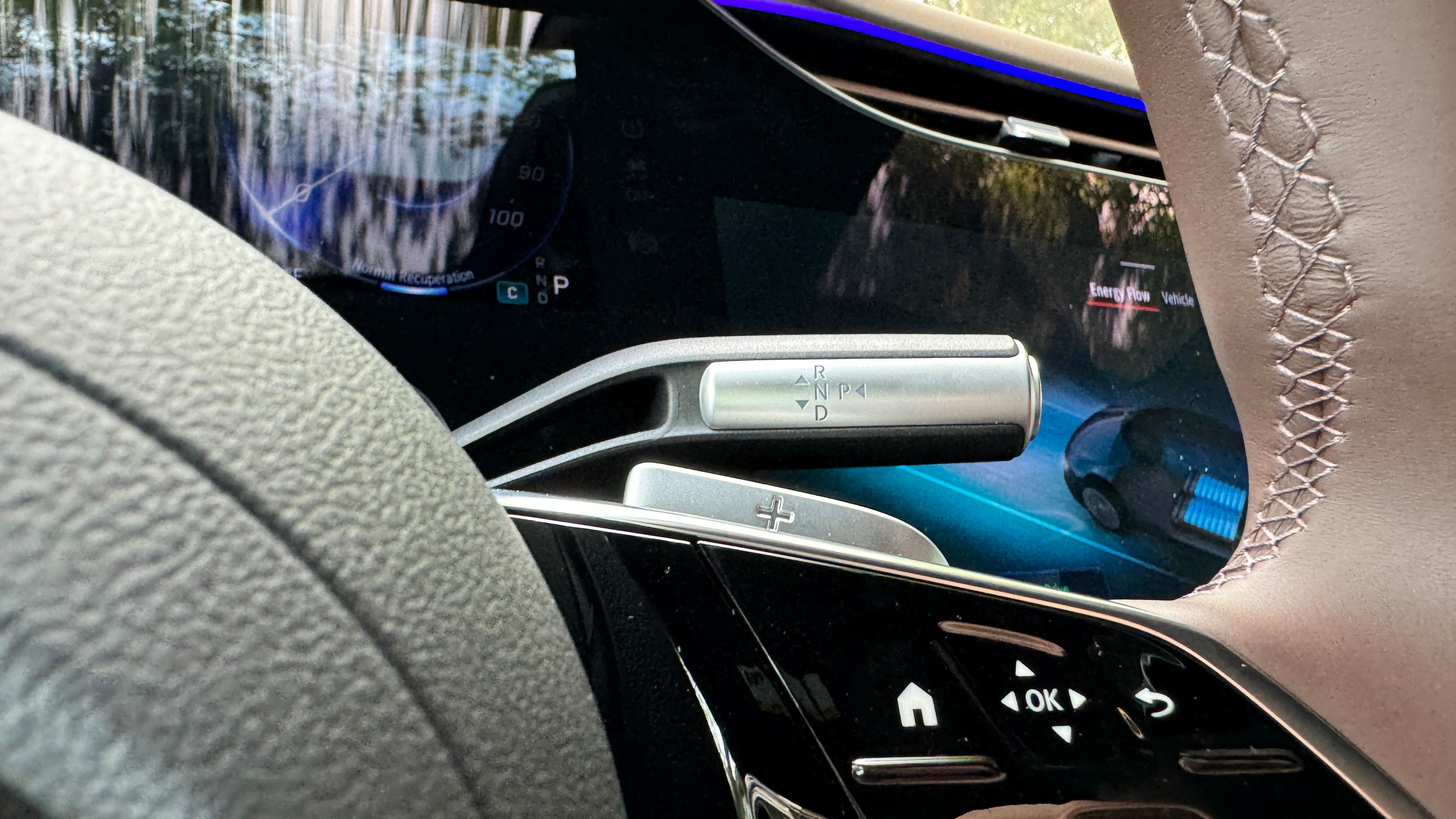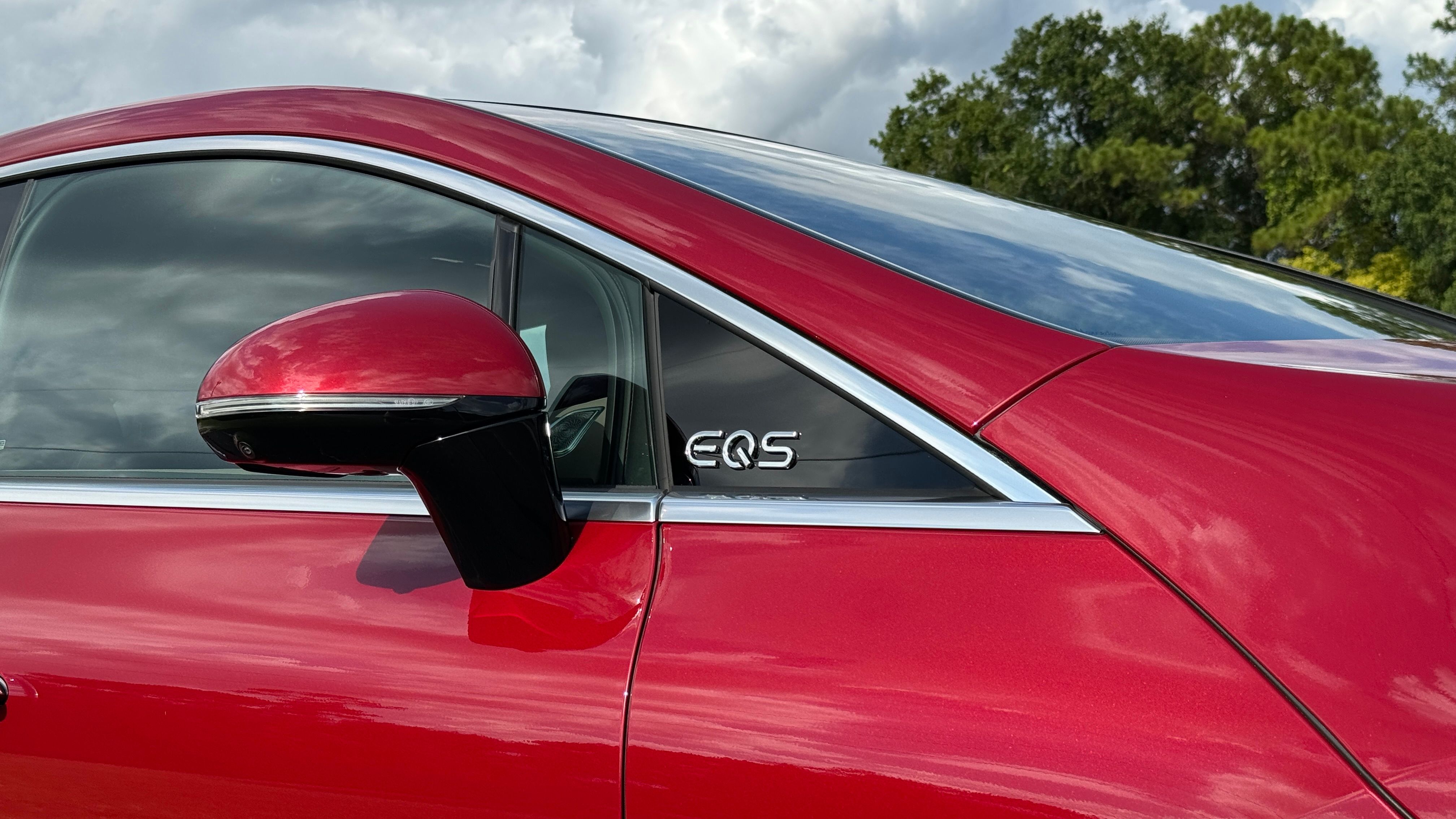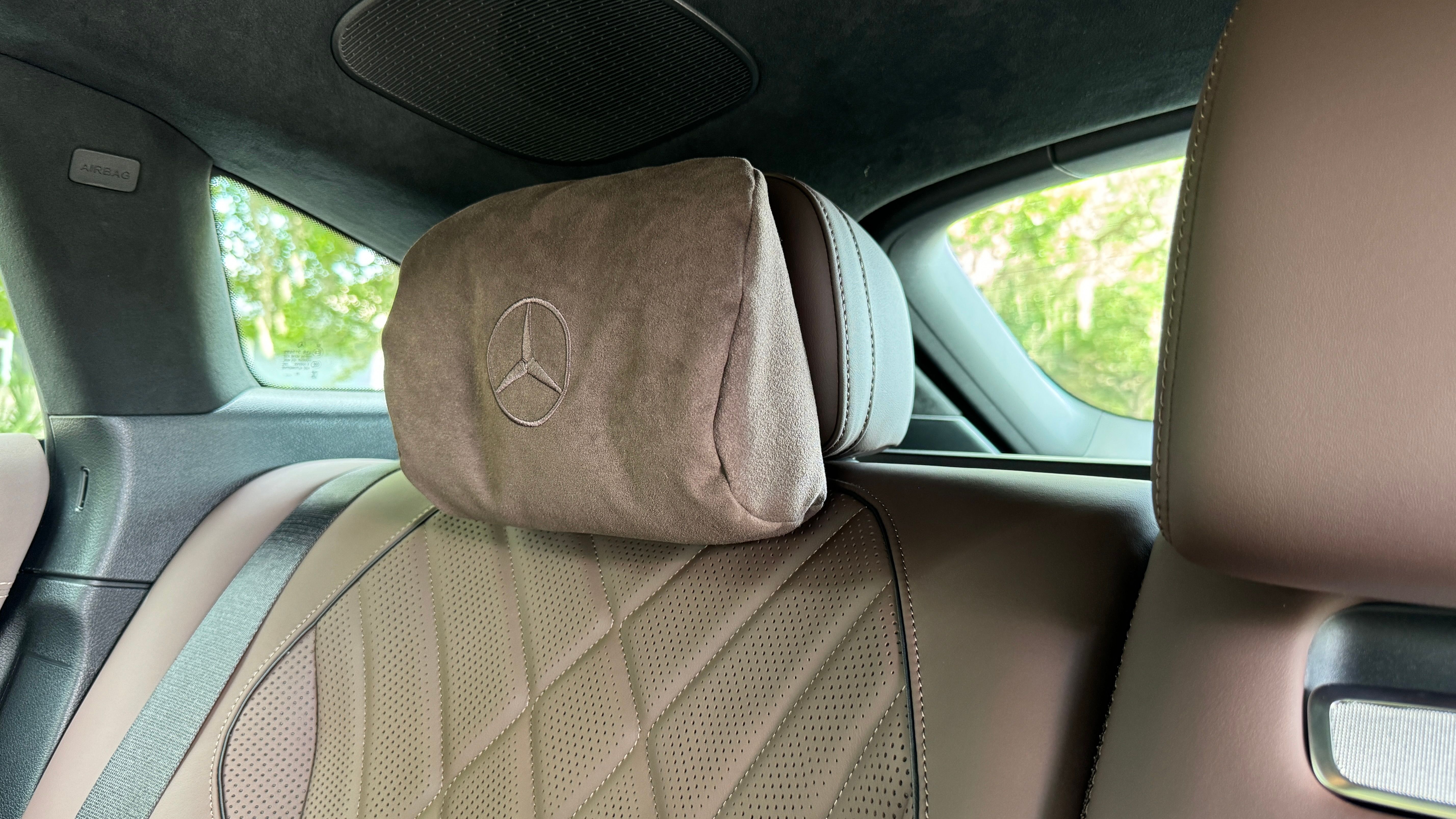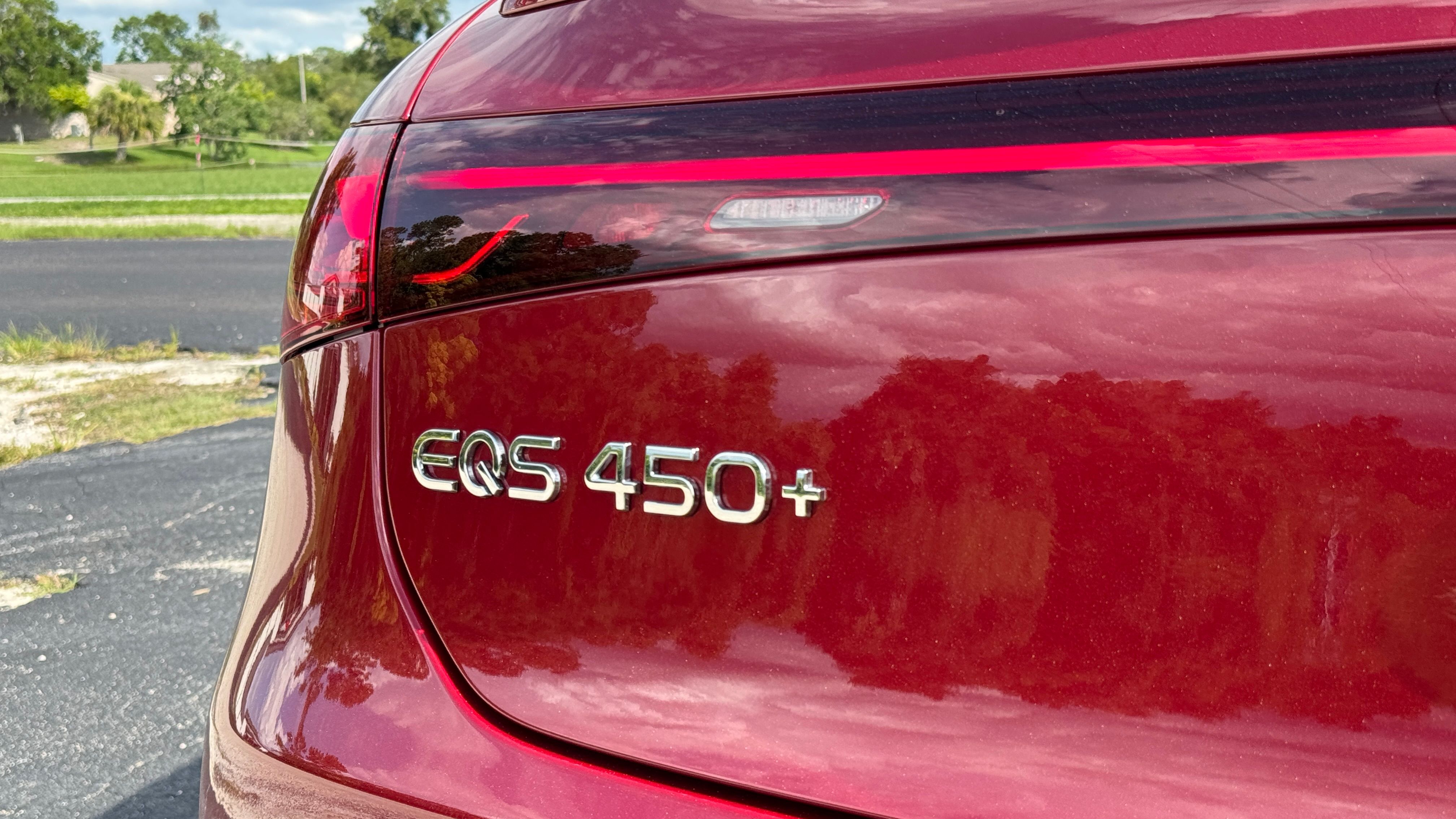The 2024 Mercedes-Benz EQS Sedan, with it’s smoothly curved shape, is the brand’s flagship electric vehicle – sibling to the iconic S-Class but powered by electrical motors. We’re not sure why Mercedes decided on an entirely different name, shape, and engineering philosophy, though. This has always been our big question about the entire Mercedes EQ strategy, which has taken a far different direction than German rival BMW, which treats its EVs as a powertrain choice within their familiar model lineup instead.
Mercedes was the first to launch a full-size electric luxury sedan with the EQS, but it now faces direct competition in the form of the 2024 BMW i7, a car we called “so nice it ruins other luxury EVs.” It’s also worth mentioning that the slightly smaller (and cheaper) Lucid Air recently blew us away in terms of price-to-luxury value.
That being said, the EQS Sedan still holds some advantages over its Bavarian contemporary. The EQS boasts a 352-mile max driving range, a giant 56-inch Hyperscreen, and one of the largest trunks ever fitted to a full-size flagship sedan. To find out if the EQS Sedan still holds up as the pinnacle luxury electric car, we tested a base 2024 EQS 450+ for a week.
Exterior: An Aerodynamic Egg
To achieve the EQS Sedan’s outstanding range numbers, Mercedes designers were told to produce the most aerodynamic car possible. After crunching wind tunnel data, the designers came back with a shape that we’ve heard other journos describe as an egg, a molten lozenge, and a jellybean. It’s not what we’d call conventionally pretty, but that’s the price to pay for better aero… except the EQS Sedan’s record-low 0.20 drag coefficient has since been outmatched by the Lucid Air, which looks normal – no, it looks gorgeous.
We wish Mercedes would have taken a step back during the design process and sacrificed that drag number to build a prettier car. Our tester is certainly one of the more well-optioned examples we’ve seen; it’s the entry-level EQS and was specced with larger 21-inch AMG multispoke wheels for $1,100, an AMG Line Exterior Package for $3,000, and MANUFAKTUR Patagonia Red metallic paint for $1,750. That red paint might seem too expensive, but Mercedes sells even pricier paints that cost $6,500. Standard wheels are 20-inch items.
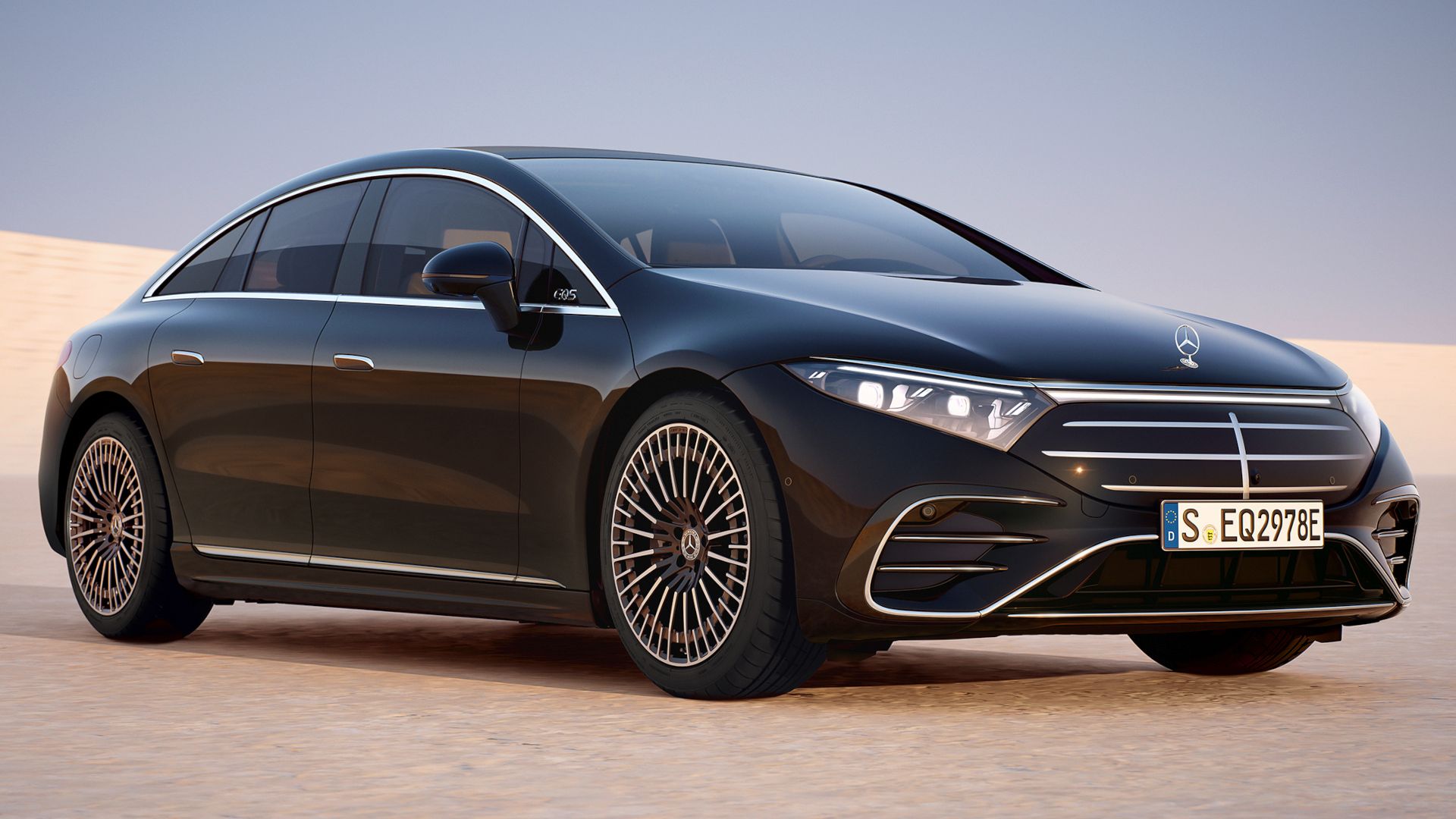
Related
2025 Mercedes-Benz EQS Sedan Debuts With Bigger Battery And S-Class Lookalike Grille
For the new year, Stuttgart’s other automaker has given the EQS a mild facelift meant to look more traditional and a bigger battery.
For 2025, Mercedes will give the EQS its first facelift, including a more conventional grille and three-pointed star hood ornament. These changes make the EQS look slightly more like an S-Class, but it still retains the odd shape. Either way, it’s an improvement to our eyes.
Interior: Screens, Screens, & More Screens
Mercedes has gone all in on screens, and it’s apparent when you step inside the EQS. The three-part MBUX Hyperscreen now comes standard on the EQS, combining a 12.3-inch digital gauge cluster, 17.7-inch infotainment system, and 12.3-inch passenger display under a single piece of glass. Visually, it looks great, but it doesn’t provide significantly more functionality than a smaller unit.
The passenger screen, while novel as a concept, doesn’t provide any additional functionality that isn’t available on the center display. You can use it to watch YouTube or play games like Tetris, but only while stopped because the driver can still see it while in motion. We noted that the screen gets extremely hot when sitting in the sun; luckily, you can control most major functions via voice command or a touch controller on the steering wheel. Wireless Apple CarPlay and Android Auto come standard, and you listen to music via a potent 15-speaker Burmester 3D Surround sound audio system with Dolby Atmos.
As expected of an EV that’s supposed to be on-par with an S-Class, the EQS Sedan boasts a high-quality interior, which becomes even more premium when equipped with our tester’s MANUFAKTUR Exclusive Nappa leather upholstery – part of a $9,400 Signature Interior Package. The seats deliver heating and ventilation up front as standard, while massage functions are optional. There are plush pillows on the headrests, but they miss out on the 4D audio found in the gas-powered S-Class. While the EQS is nicer than most EVs, it feels a half notch below the S-Class in terms of overall fit and finish.
Practicality: Hatchback > Sedan
Unlike any of its full-size sedan contemporaries, the EQS Sedan boasts a hatchback-style trunk rather than a conventional sedan cargo hold. A huge hatch opening reveals 22 cubic feet of space, much better than the BMW i7’s 17.7 cubes. There’s even additional storage under the floor in the EQS to store a charging cable. Two electronic switches in the trunk make it easy to fold the rear seats in a 60/40 split, opening up 63 cubes, though we are surprised the EQS can’t raise the seats back up via power at this price point. Like the i7, the EQS sedan doesn’t have a frunk; to add windshield wiper fluid, there’s a separate door on the front quarter panel.
|
Mercedes EQS Sedan Interior Dimensions vs. BMW i7 |
||||
|---|---|---|---|---|
|
Cargo |
Max Cargo |
Headroom |
Legroom Front | Rear |
|
|
Mercedes EQS Sedan |
22 ft³ |
63 ft³ |
40.4 inches |
41.7 | 40.4 inches |
|
BMW i7 |
17.7 ft³ |
TBC |
39.8 inches |
41.2 | 42.8 inches |
Mercedes prioritized cargo over passenger comfort, which is a strange move given the segment where this car competes. The EQS has loads of trunk space – though the Lucid Air, despite being a slightly smaller car, offers even more. And one has to wonder whether cargo space in a luxury full-size sedan is the biggest priority?
Front legroom bests the i7 by half an inch, but the BMW wins back some points with acres of rear legroom – nearly 2.5 inches over what the EQS has. You can add massage and ventilation to the rear seats for just $200, but this option was not equipped to our tester, meaning the seats were heated only. BMW still wins in rear seat comfort with an available recliner and 38-inch theater screen. By contrast, the EQS Sedan’s rear seats don’t recline nearly as much, though Mercedes will add more adjustability for the 2025 model year plus more seat foam.
Performance: Going The Distance
Mercedes currently offers the EQS Sedan in four power configurations (although we consider the AMG version separately). We spent the week in the base EQS 450+, a single-motor rear-drive variant that produces 355 horsepower and 419 lb-ft of torque. It’s the slowest of the bunch at 5.8 seconds to 60 mph, though we recorded a 5.62-second time in our independent testing.
One model up in the range, the EQS 450 4MATIC adds a second electric motor on the front axle, keeping the same horsepower rating but increasing the torque to 590 lb-ft. The added torque drops the 0 to 60 time by half a second at a cost of just seven miles of range. If you want AWD, we’d recommend spending a little extra on the EQS 580 4MATIC. It boasts 536 hp and 633 lb-ft of torque, hitting 60 mph in just 4.1 seconds and matching the 450 4MATIC with 345 miles of range. The AMG EQS tops the lineup with 649 hp and 700 lb-ft (751 hp and 752 lb-ft with launch control).
|
Base Model Performance and Efficiency Comparison: Mercedes EQS 450+ vs. BMW i7 eDrive50 |
||||||
|---|---|---|---|---|---|---|
|
Horsepower |
Torque |
0-60 |
Max Range |
Battery Size |
MPGe |
|
|
Mercedes EQS 450+ |
355 hp |
419 lb-ft |
5.8 seconds |
352 miles |
108.4 kWh |
95/98/96 |
|
BMW i7 eDrive50 |
449 hp |
549 lb-ft |
5.3 seconds |
321 miles |
105.7 kWh |
87/95/90 |
The EQS is underrated in more ways than one, as the 450+ model’s 352-mile EPA-rated range appeared to be lower than the real world number; the in-car display showed a max range of 504 miles with 100% charge. That number might be a bit optimistic, but the EQS Sedan should easily go over 400 miles on a charge from its sizable 108.4 kWh battery. Those strange aero-inspired looks pay dividends in range.
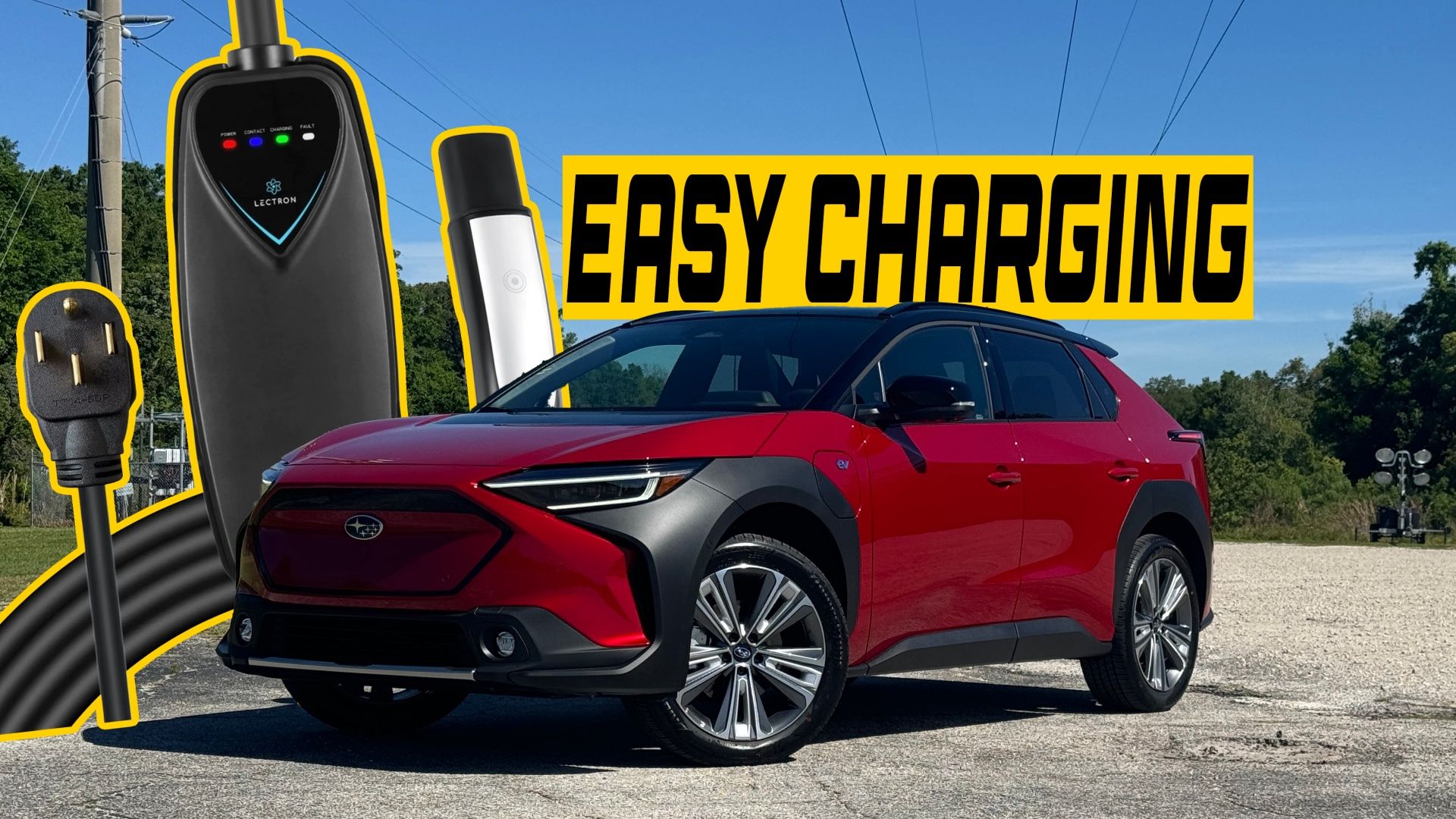
Related
Getting A Home Charger Ends The EV Ownership Nightmare
If you have a home charger, owning an EV goes from challenging to hassle-free.
The EQS charges at a peak speed of 200 kW, meaning it will go from 10% to 80% charge in around 31 minutes. On a Level 2 home charger, it will take around 11.5 houses to go from 10% to 100% at 9.6 kW.
Driving Impressions: Soft Silence
Standard Airmatic Air Suspension with an Adaptive Dampening System delivers a cushy ride, though the EQS is prone to some odd secondary rebound, meaning it bounces back from a bump, then takes a moment to fully settle. Even with the larger 21-inch wheels, the suspension does a commendable job soaking up imperfections and softening them to a barely recognizable degree. The 450+ might be the least peppy EQS, but it still delivers a strong punch off the line that won’t crush your head into those integrated pillows. Drivers can opt for silent acceleration or turn on one of three sound experiences: Silver Waves (sci-fi noises), Vivid Flux (a deeper hum), and Roaring Pulse (imitating a gasoline engine). These sounds get a bit louder in Sport mode, but aren’t annoying unless you go full throttle.
While we love how even the base EQS goes, we are less enamored by how it stops. The brake pedal is difficult to modulate smoothly, especially with regeneration turned on. Mercedes actually programs the pedal to move during regen, so it’s never quite where you expect it to be; this can actually be shocking if you aren’t ready for it. There’s also an Intelligent Mode for the regenerative brakes, which pulls the car down to an appropriate speed based on the car in front (like adaptive cruise control).
The steering is light with an artificial feel, which is fine for this class of vehicle. Rear-wheel steering up to 10 degrees helps the EQS shrink during slow-speed maneuvers such as parking. This is a comfortable cruiser rather than a sporty driver, so opt for the AMG model if you desire background thrills.
Pricing & Verdict: Luxury Done Differently
As the EQS Sedan is the flagship electric model in the Mercedes lineup, it’s priced accordingly. The EQS 450+ starts at $104,400, and it only costs $3,000 more for the 4MATIC model. Given that the 4MATIC gets more torque and only loses seven miles of range, we think it’s well worth the price. If buying a six-figure car isn’t a problem for you, stepping up to the EQS 580 4MATIC might not be a stretch for $127,350. The 580 brings the acceleration to more thrilling levels without compromising on range.
Even at these prices, there are still many options to add. Our 450+ exceeded the 580’s price with an as-tested MSRP of $128,010 (including the $1,120 delivery fee). The $9,400 MANUFAKTUR Signature Interior was the biggest option, but there were plenty of other add-ons.
The BMW i7 is the most comparable vehicle, starting at $105,700 for the eDrive50 model, which delivers more power than the EQS 450+ but a lower range. The xDrive60 produces exactly the same power as the EQS 580, but is slower to 60 mph and doesn’t go as far on a charge. Mercedes wins against BMW on range, but we prefer the i7’s more conventional styling, cabin layout, and rear comfort. But, if you value charging speed, range, and cargo capacity, the EQS Sedan is the superior electric flagship.

